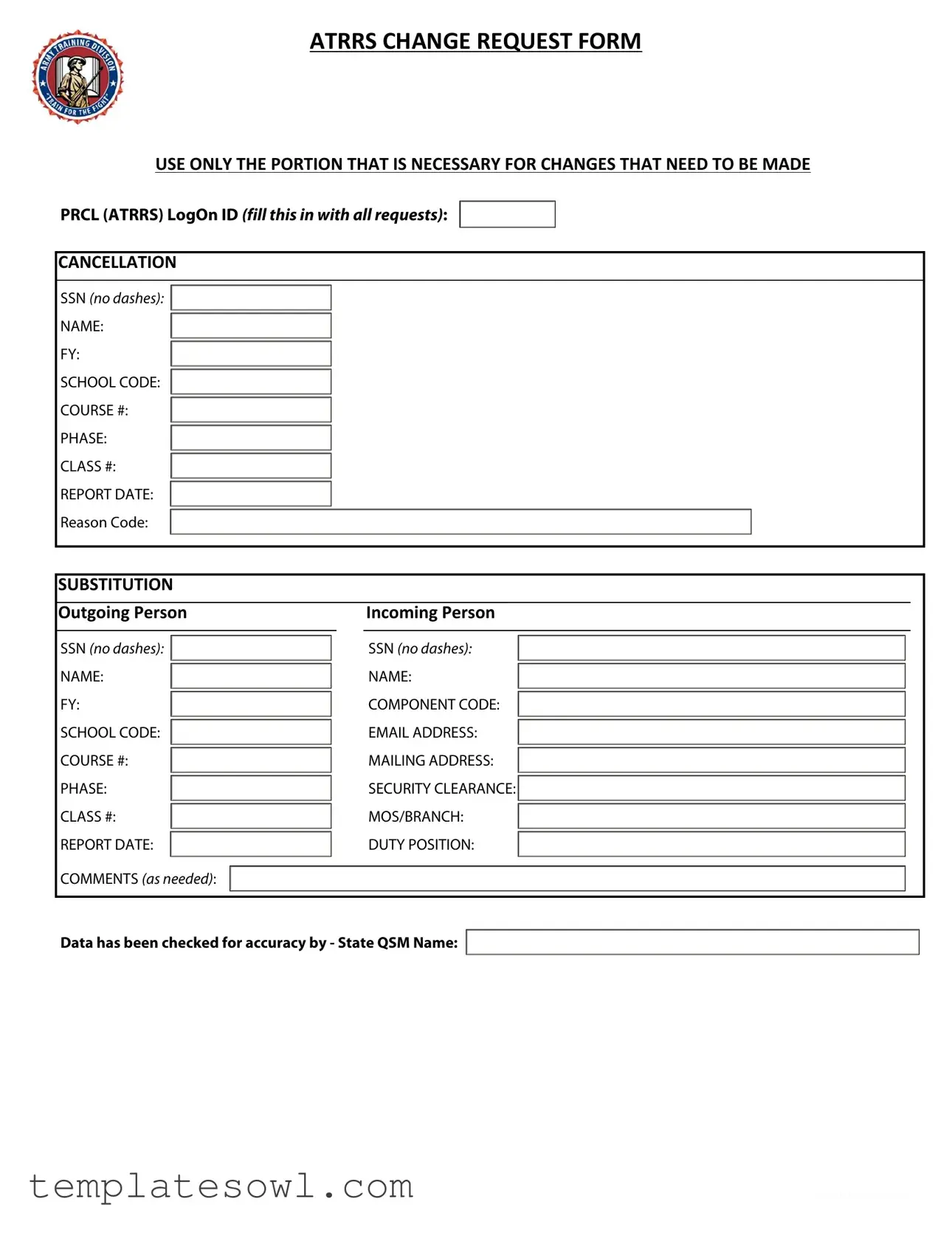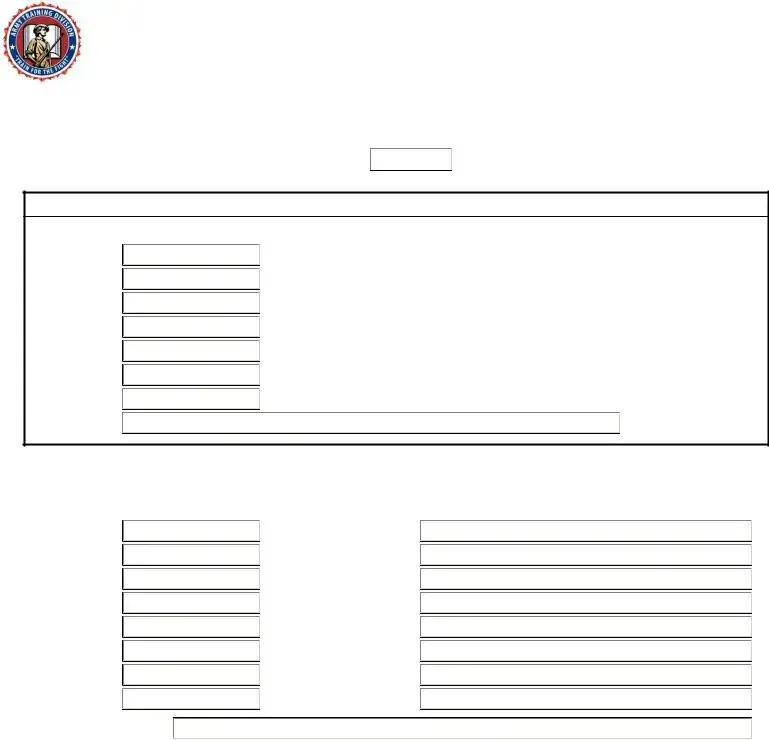Filling out the ATRRS Change Request form accurately is crucial for ensuring an efficient processing of requests. However, many individuals make common mistakes that can lead to unnecessary delays. One frequent error is failing to fill in all required fields, particularly the LogOn ID, which is essential for identification purposes. Omitting this detail hinders the ability of the processing staff to connect requests with the appropriate user accounts.
Another significant mistake involves incorrect entries in the Social Security Number (SSN) field. Individuals often enter dashes, which the system does not accept. This simple oversight can lead to confusion and delays, as staff may be unable to verify personal records. Additionally, not double-checking the SSN against official documents can result in inaccuracies that may complicate the request.
A third common error is neglecting to provide a clear and concise reason code. Users sometimes fill out the form without explaining why the change is necessary. Providing specific reasoning not only clarifies the intent of the request but also aids processing staff in prioritizing cases effectively.
Furthermore, some individuals forget to complete the contact information, particularly the email address. This omission can prevent communication from the processing team, leaving the requester unaware of the status of their change request. Including accurate contact details is essential for facilitating any follow-up inquiries or clarifications.
Another mistake relates to the use of outdated or incorrect course codes and school codes. Misinformation in these areas can lead to the request being directed to the wrong department or resulting in referral to an incorrect program. Individuals should always verify these codes before submission to ensure accurate processing.
The use of outdated or incorrect mailing addresses is also prevalent among individuals submitting the form. When changes are approved, notification often occurs via mail. Ensuring that the correct address is provided prevents potential issues such as loss of communication or misdirected documents.
Failing to include comments when necessary is another common error. While some requests may seem straightforward, additional context can clarify expectations and facilitate smoother processing. Whether explaining a unique situation or highlighting urgent needs, thoughtful comments enhance understanding.
Individuals may also overlook checking their data for accuracy before submission. Consequently, the form might be submitted with clerical errors. Verification of all entries helps minimize the risk of further corrections post-submission, streamlining the overall process.
Finally, neglecting to provide initials or full names in the section that requires the data verification by State QSM Name can cause delays in processing. This section confirms that the change request has been reviewed for accuracy. Without proper sign-off, the request may face additional scrutiny, further extending processing times.



